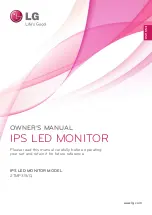
In Mac OS X version 10.5 or later
1
From the Apple menu, navigate to:
System Preferences
>
Print & Fax
2
Click
+
, and then click the
IP
tab.
3
Type the printer IP address in the address field, and then click
Add
.
Note:
View the printer IP address in the TCP/IP section in the Network/Reports menu. The IP address
appears as four sets of numbers separated by periods, such as 123.123.123.123.
In Mac OS X version 10.4
1
From the Finder, navigate to:
Applications
>
Utilities
2
Double
‑
click
Printer Setup Utility
or
Print Center
.
3
From the Printer List, click
Add
, and then click
IP Printer
.
4
Type the printer IP address in the address field, and then click
Add
.
Note:
View the printer IP address in the TCP/IP section in the Network/Reports menu. The IP address
appears as four sets of numbers separated by periods, such as 123.123.123.123.
•
For AppleTalk printing:
Note:
Make sure AppleTalk is activated on your printer.
In Mac OS X version 10.5
1
From the Apple menu, navigate to:
System Preferences
>
Print & Fax
2
Click
+
, and then navigate to:
AppleTalk
> select the printer from the list >
Add
In Mac OS X version 10.4
1
From the Finder, navigate to:
Applications
>
Utilities
2
Double
‑
click
Printer Setup Utility
or
Print Center
.
3
From the Printer List, click
Add
.
4
Click the
Default Browser
tab >
More Printers
.
5
From the first pop
‑
up menu, select
AppleTalk
.
6
From the second pop
‑
up menu, select
Local AppleTalk Zone
.
7
Select the printer from the list, and then click
Add
.
Setting up serial printing
In serial printing, data is transferred one bit at a time. Although serial printing is usually slower than parallel printing,
it is the preferred option when there is a great deal of distance between the printer and computer or when an interface
with a better transfer rate is not available.
Additional printer setup
56
















































